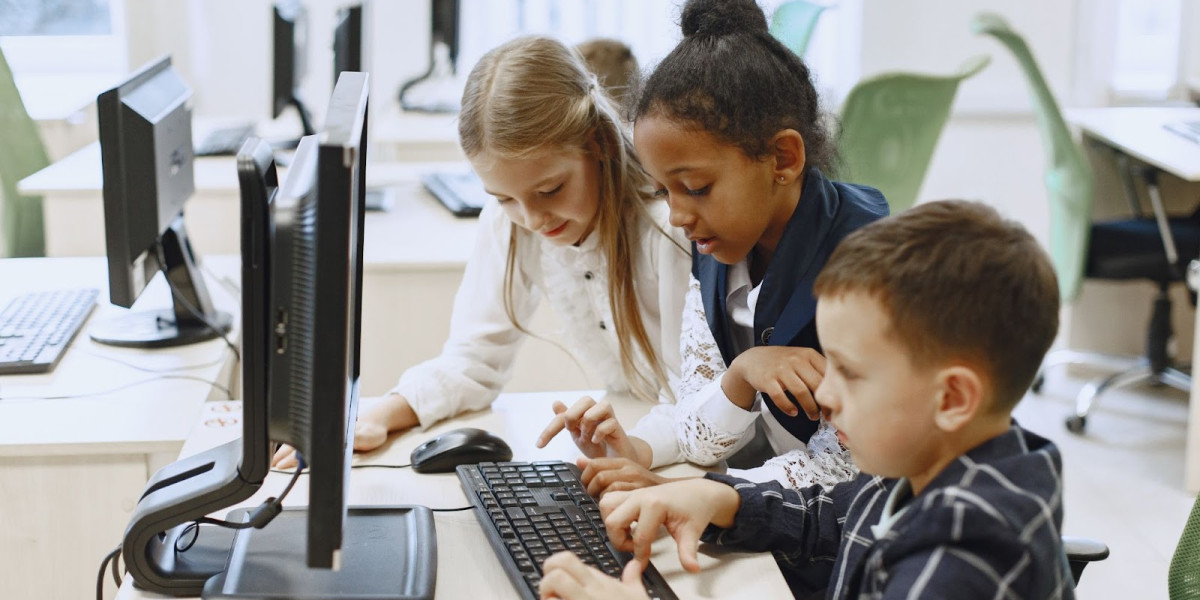Modern education is evolving quickly, moving beyond blackboards and one-way teaching to create interactive, technology-driven classrooms. Modern schools now aim to create spaces where students explore, interact, and learn in a way that prepares them for the real world. The Smart Classroom Concept has become one of the most impactful innovations in education, transforming ordinary classrooms into interactive hubs of knowledge.
A smart classroom combines technology, collaboration, and creativity to give students an engaging experience. It uses digital boards, projectors, multimedia lessons, and interactive activities to keep children involved and motivated. For schools focused on holistic learning for children, smart classrooms are becoming a key element in improving academic and personal development.
1. Better Student Engagement
Traditional teaching often makes students passive listeners. Smart classrooms solve this problem by adding visuals, animations, and interactive quizzes that capture attention. Lessons become more interesting when they involve videos, simulations, and real-life examples. Students are encouraged to participate, ask questions, and stay engaged throughout the session. This improved attention span leads to better knowledge retention and enthusiasm for learning.
2. Clear Understanding of Concepts
Complex topics can confuse students when explained only through text. The Smart Classroom Concept uses diagrams, 3D models, and simulations to present concepts visually. For example, a lesson on the solar system becomes far more exciting when children can see planets moving in orbit rather than just reading about them. This visual approach helps students understand deeply and remember information for longer.
3. Collaborative and Social Learning
Teamwork is a crucial life skill, and smart classrooms promote it naturally. Group discussions, shared projects, and peer-to-peer activities encourage students to work together. They learn how to express ideas, listen to different opinions, and find solutions as a team. Collaborative learning builds confidence, improves communication skills, and prepares children for real-world scenarios where teamwork is essential.
4. Personalized Learning Experience
No two students learn at the same pace. Some need extra time to grasp certain topics, while others progress quickly. Smart classrooms allow teachers to provide digital resources, recorded lessons, and practice exercises that students can review anytime. This flexibility helps children take charge of their own learning. Personalized education supports holistic learning for children, as it respects individual strengths and needs, helping every child reach their full potential.
5. Real-Time Feedback and Quick Assessments
One of the strongest features of a smart classroom is instant evaluation. Online quizzes, polls, and assessments give immediate results. Students know their strengths and areas where they need improvement right away. Teachers also gain insights into class performance, which allows them to adjust their teaching methods quickly. This process saves time, reduces stress, and helps students perform better in exams.
6. Builds Digital Literacy and Confidence
Technology is part of everyday life, and students must be digitally skilled to succeed in the future. Smart classrooms introduce children to devices, online platforms, and research tools at an early stage. They learn how to access information safely, create presentations, and communicate through digital media. These skills give students an advantage when they enter higher education or future workplaces.
7. Makes Learning Enjoyable
When learning feels like fun, students become eager participants. Gamification — using points, rewards, and badges — adds a playful element to education. Smart classrooms also use interactive tools that turn lessons into exciting activities rather than boring tasks. When children enjoy learning, their motivation and curiosity naturally increase, leading to consistent academic growth.
8. Develops Critical Thinking and Creativity
The Smart Classroom Concept encourages students to think beyond textbooks. Instead of just memorizing answers, they explore problems, research solutions, and share their ideas with the class. This process improves problem-solving abilities and builds confidence in expressing thoughts. Over time, students develop analytical skills and creative thinking, which are valuable in every field of life.
9. Moves Beyond Rote Learning
Rote learning may help pass exams, but it does not build true understanding. Smart classrooms focus on application-based knowledge. Through experiments, case studies, and interactive demonstrations, students connect theory with real-life situations. This approach reduces the habit of blind memorization and encourages logical, practical learning.
10. Prepares Students for Future Challenges
The ultimate goal of education is to prepare children for life. The Smart Classroom Concept equips them with future-ready skills such as teamwork, communication, adaptability, and digital proficiency. They become confident, independent learners who are ready to take on higher education, competitive exams, and professional careers.
NatureNurture’s Contribution to Smart Education
For over 20 years, NatureNurture has partnered with schools to modernize classrooms and improve learning outcomes. The brand’s mission goes beyond installing digital devices — it is about creating an ecosystem where students think critically, stay engaged, and develop lifelong learning habits.
NatureNurture supports schools in adopting the Smart Classroom Concept by providing training, resources, and implementation strategies. This partnership ensures that technology is used effectively and supports holistic learning for children, focusing on their academic, emotional, and social growth. Schools that work with NatureNurture report better participation, improved performance, and more confident students.
Final Thoughts
Education must keep pace with the changing world, and the Smart Classroom Concept is a powerful step in that direction. By making lessons engaging, clear, and interactive, it allows students to enjoy learning while developing crucial life skills.
Schools that embrace this approach are not just teaching subjects; they are preparing children for success in the future. With guidance from brands like NatureNurture, the shift toward interactive and meaningful education becomes easier and more effective. A smart classroom is more than a technological upgrade — it is an investment in a brighter future for every child.








